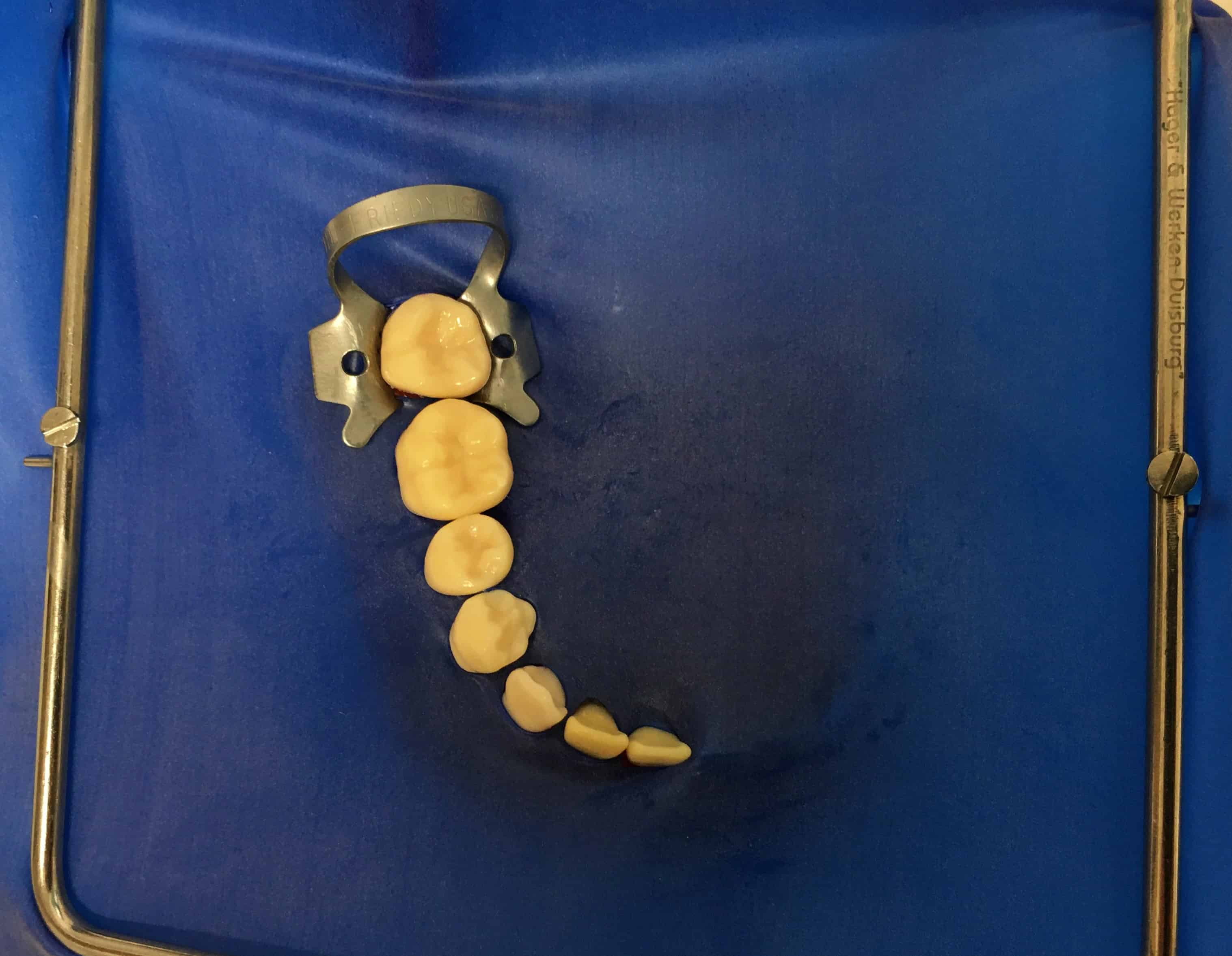Filling therapy
Caries is caused by the interaction of bacteria, which settle on the teeth and especially in the spaces between the teeth in the form of plaque, and sugar, which we consume with desserts or sweet drinks. The bacteria feed on the sugar and may partially form and excrete acid as an end product. This acid dissolves calcium (lime) from our teeth, just as Durgol, for example, dissolves lime in the coffee pot. If this rarely happens, the saliva can store calcium in the tooth and the tooth remains healthy. However, if the tooth undergoes acid attacks again and again, the hard enamel can become so brittle that it collapses over time and a hole develops. Here the bacteria feel even more comfortable and cannot be cleaned away using a toothbrush. Thus, the caries progresses unhindered, penetrates deeper into the tooth to the softer dentine and gradually dissolves the tooth.

We can stop an initial caries in our dental practice with a special fluoride therapy and a lasting improvement in oral hygiene. However, if the caries has already broken through, it must be completely removed with a drill. The resulting hole is repaired with a tooth-coloured plastic filling so that the tooth regains its original shape. If the tooth is severely damaged and the resulting defect is correspondingly large, ceramic fillings or ceramic partial crowns may be useful.
Fillings or ceramic partial crowns may also be necessary if a tooth breaks. This often happens with teeth with large amalgam fillings. In our dental practice we usually leave amalgam fillings intact. However, if a tooth breaks, the amalgam is removed and the tooth is repaired as described above. For this – as well as basically for filling therapies and root canal treatments – we use a dental dam (an insulation made of a thin rubber foil, see picture below), so that the amalgam cannot get into your mouth and we can work in a clean and dry environment.

DENTAL DAM
For your protection and for the highest possible quality of our work!
For fillings and root canal treatments we use dental dams in our dental practice – whenever possible.
